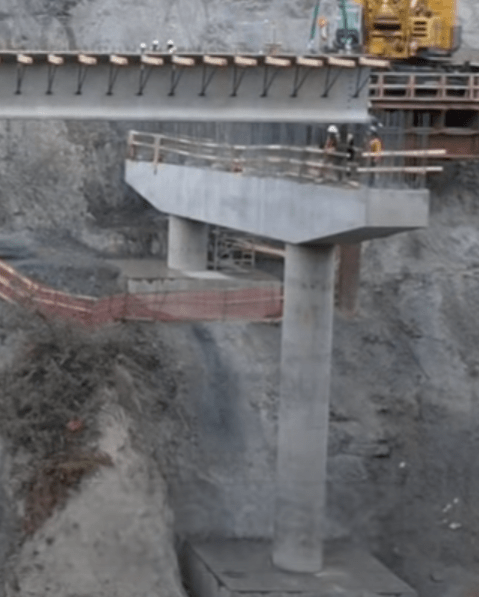Imran Structural Engineer
Civil/Environmental
- Jun 8, 2021
- 28
Hi everyone
I am designing bridges in a project with steep slopes. Overall topography of project is very similar to kicking horse canyon phase 4, British Columbia Canada (picture attached) Due to steep slope and to avoid cutting, both bents cannot be kept at same height.

The issue that I am facing with same configuration while designing on my project is that shorter pier/column on the left fails in shear in seismic design. What is the solution to this problem of shear concentration.
The project in the picture shared above is already completed and opened to traffic. Can someone please help me understand how did they tackle this issue of shear failure with this configuration.
I am designing bridges in a project with steep slopes. Overall topography of project is very similar to kicking horse canyon phase 4, British Columbia Canada (picture attached) Due to steep slope and to avoid cutting, both bents cannot be kept at same height.

The issue that I am facing with same configuration while designing on my project is that shorter pier/column on the left fails in shear in seismic design. What is the solution to this problem of shear concentration.
The project in the picture shared above is already completed and opened to traffic. Can someone please help me understand how did they tackle this issue of shear failure with this configuration.
